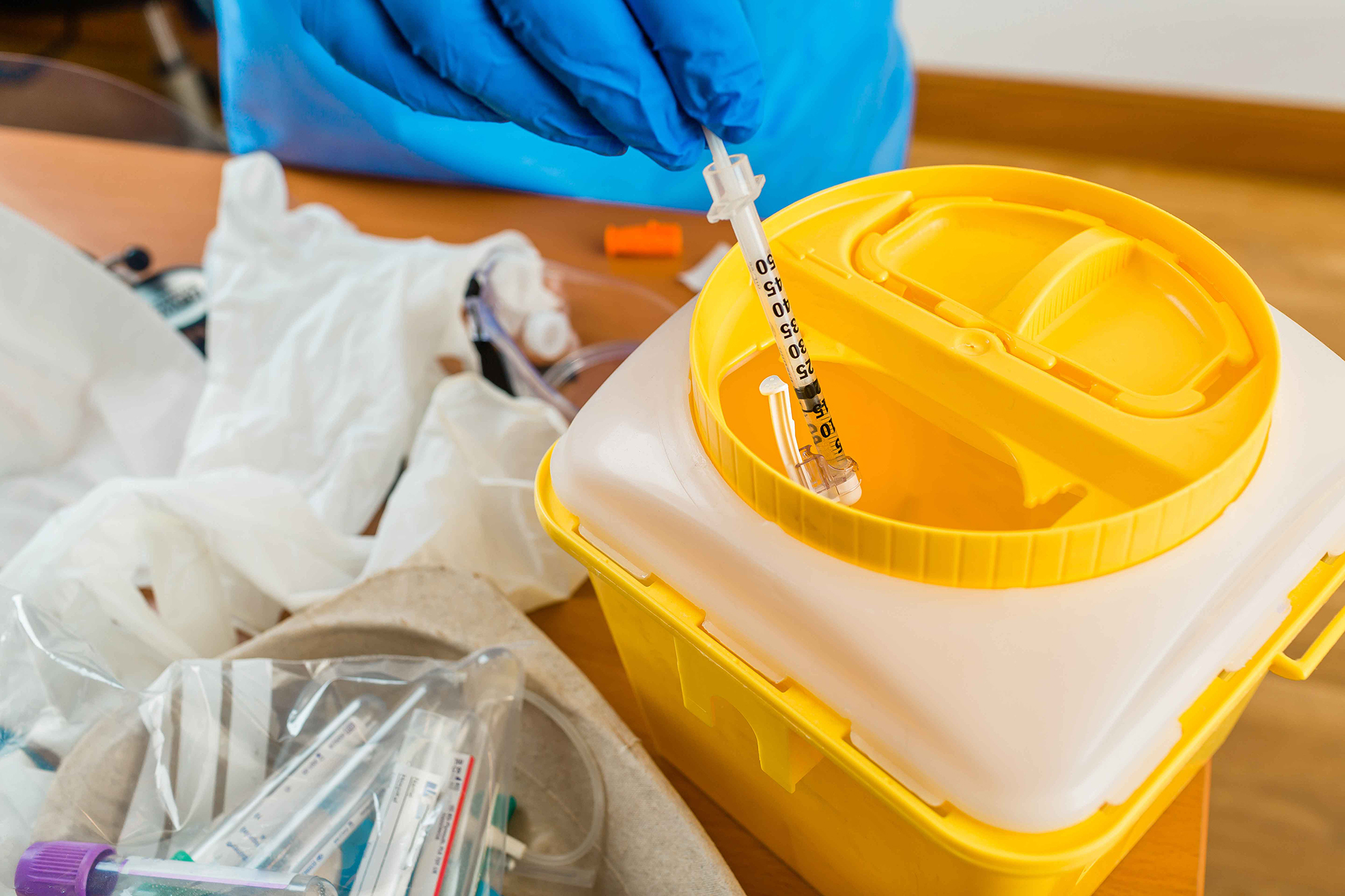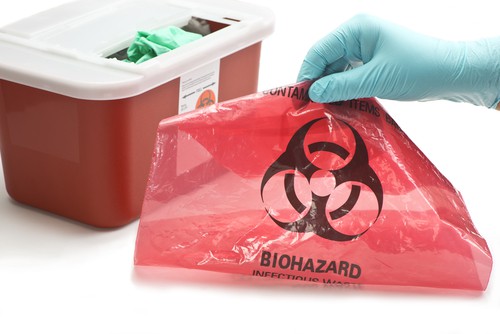Certified and Reliable Medical Waste Removal Service: Partnering for a Cleaner Future
Wiki Article
Compliance and Regulations for Medical Waste Disposal
Conformity and policies for clinical garbage disposal play an essential function in making certain the safety and well-being of both healthcare experts and the public. Correct administration of clinical waste is important to avoid the spread of infections, shield the environment, and maintain public wellness. This calls for adherence to specific guidelines and protocols established forth by governing firms and bodies. These policies incorporate numerous aspects, consisting of the classification and segregation of clinical waste, appropriate storage and managing procedures, in addition to transport and disposal methods. By following these policies, health care facilities can reduce the danger of contamination and possible harm to people and the setting. This write-up will explore the value of compliance and give a review of the crucial guidelines governing medical garbage disposal.Importance of Conformity
The significance of compliance with guidelines for medical waste disposal can not be overstated. Appropriate disposal of medical waste is essential for guaranteeing the security and wellness of healthcare workers, clients, and the general public. Clinical waste, which consists of things such as used needles, contaminated gloves, and biomedical waste, can pose major health threats otherwise handled and gotten rid of properly.Compliance with guidelines guarantees that medical waste is taken care of in a manner that minimizes the potential for direct exposure to dangerous compounds and contagious diseases - medical waste removal service. It helps stop the spread of infections, such as HIV, liver disease B and C, and other bloodborne virus. Compliance also plays an essential function in protecting the environment by avoiding contamination of water resources, dirt, and air
Failure to abide by regulations can result in serious repercussions for medical care facilities, consisting of fines, legal activity, and damages to their reputation. Additionally, non-compliance may endanger the wellness and safety of healthcare employees, individuals, and the area.
Conformity with guidelines for clinical waste disposal requires adherence to certain guidelines and procedures. These may include appropriate partition, packaging, labeling, and storage space of medical waste. It likewise entails making use of approved disposal techniques, such as incineration, autoclaving, or landfilling, relying on the type of waste.
Regulatory Agencies and Bodies
Governing companies and bodies play an important role in overseeing conformity with laws for clinical waste disposal. These organizations are in charge of establishing standards, criteria, and procedures to make sure the proper and risk-free handling of medical waste. They enforce and keep an eye on conformity to secure public health and wellness and the setting.Among one of the most noticeable regulative agencies in the USA is the Epa (EPA) The EPA is accountable for controling the storage space, transportation, therapy, and disposal of medical waste. They develop standards for waste generators, transporters, and treatment facilities to comply with, making sure that all needed preventative measures are required to stop the spread of diseases and contamination.
An additional essential regulatory body is the Occupational Safety and Health Administration (OSHA) OSHA establishes regulations and criteria to shield workers from work hazards, consisting of those pertaining to clinical waste. WasteX Medical Waste Disposal. They offer guidelines for the safe handling and disposal of clinical waste to safeguard staff members in medical care facilities
In addition to these government agencies, private states likewise have their very own governing bodies that manage clinical garbage disposal. These companies might have their very own specific regulations and requirements that should be adhered to.

Classification and Partition of Clinical Waste
To ensure proper administration of clinical waste, it is important to identify and segregate it according to developed procedures and standards. medical waste disposal. Classification and partition play a vital duty in minimizing the risk of infection, protecting the environment, and making sure the safety of medical care workers and the basic publicMedical waste is categorized into different classifications based on its possible threat degree. These categories consist of contagious waste, pathological waste, sharps waste, pharmaceutical waste, chemical waste, and contaminated waste. Each category requires details handling, storage space, transport, and disposal techniques to minimize the danger of exposure and contamination.
Partition of clinical waste involves dividing different kinds of waste at the source. This procedure navigate here makes sure that waste with various danger levels is not combined, decreasing the possibility for cross-contamination and making disposal procedures extra effective. Appropriate segregation is accomplished via the usage of color-coded containers and labels, which assist healthcare employees and waste monitoring employees identify and deal with each kind of waste correctly.
In addition to category and segregation, healthcare facilities must also abide by regional, state, and federal regulations pertaining to clinical waste administration. These guidelines lay out particular needs for storage, transport, therapy, and final disposal of clinical waste, ensuring compliance and maintaining public health and wellness and safety and security.
Appropriate Storage and Dealing With Treatments
Proper storage and managing procedures play a critical function in making sure the certified and risk-free monitoring of clinical waste. Medical waste, which consists of items such as utilized syringes, contaminated gloves, and ended drugs, can present severe health and environmental risks otherwise managed properly. It is critical for medical care centers and other generators of clinical waste to execute rigorous storage and taking care of procedures.
To start with, clinical waste ought to be kept in long lasting, watertight containers that are specifically created for this purpose. These containers should be identified with the global biohazard symbol and the words "medical waste" to clearly show the contents. In addition, the containers ought to be kept safely closed to stop any kind of prospective leak or splilling.
Furthermore, it is very important to set apart various sorts of clinical waste to stop cross-contamination. Sharps, such as scalpels and needles, ought to be stored in puncture-resistant containers to decrease the danger of injuries - WasteX Medical Waste Disposal. Chemical waste, such as solvents and anti-bacterials, ought to be stored independently from other sorts of clinical waste to prevent chain reactions or unsafe direct exposures

Transport and Disposal Techniques
Health care facilities have to make sure the safe transportation and appropriate disposal of their medical waste to abide with guidelines and safeguard public health. Transport and disposal techniques play an essential function in avoiding the spread of infectious illness and lessening the ecological effect of medical waste.
To deliver clinical waste, medical care centers ought to use leak-proof and puncture-resistant containers that are classified with the biohazard symbol. These containers ought to be firmly sealed to avoid any leak during transportation. In addition, health care centers must establish procedures for the transport process, consisting of making use of trained workers and committed vehicles.
When the medical waste reaches the disposal center, it undergoes various approaches of therapy - WasteX Medical Waste Disposal. One usual method is incineration, which involves shedding the waste at high temperatures to damage virus and minimize the quantity of waste.
It is essential for healthcare centers to function with accredited and allowed waste management business to ensure proper transport and disposal of clinical waste. These firms have the expertise and sources to deal with medical waste securely and in conformity with guidelines.
Final Thought
In final thought, conformity with policies for medical garbage disposal is of utmost relevance to make sure public health and wellness and safety. Governing companies and bodies play an important function in imposing these regulations. Proper classification and segregation of clinical waste, in addition to adhering to proper storage and handling treatments, are vital to avoid contamination and the spread of conditions. Sufficient transport and disposal techniques must be applied to lessen environmental effects. In general, adherence to conformity and guidelines is necessary to properly manage clinical waste.Medical waste, which consists of items such as utilized needles, infected gloves, and biomedical waste, can posture serious health and wellness threats if not dealt with and disposed of effectively.
These categories consist of infectious waste, pathological waste, sharps waste, pharmaceutical waste, chemical waste, and radioactive waste.Partition of medical waste involves separating different types of waste at the resource. Proper partition is achieved with the use of color-coded labels and containers, which help medical care employees and waste management personnel deal with each kind and recognize of waste correctly.
Chemical waste, such as solvents and disinfectants, must be saved separately from other types of medical waste to stop hazardous exposures or chemical reactions.
Report this wiki page